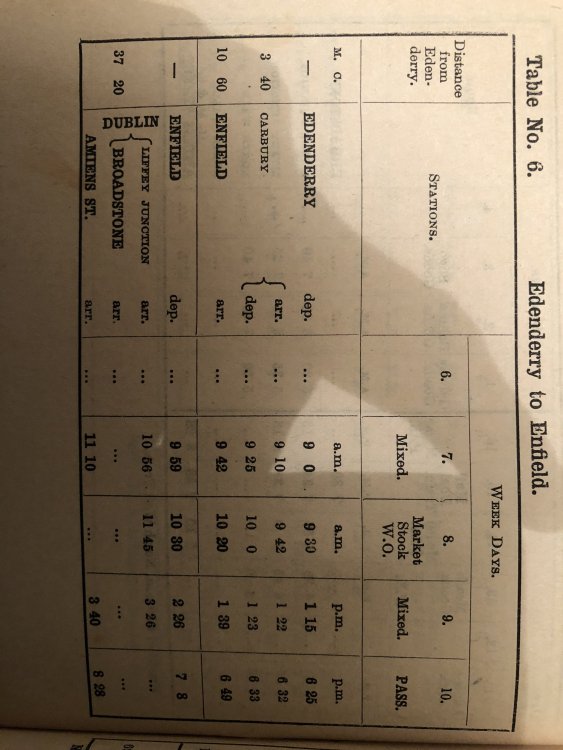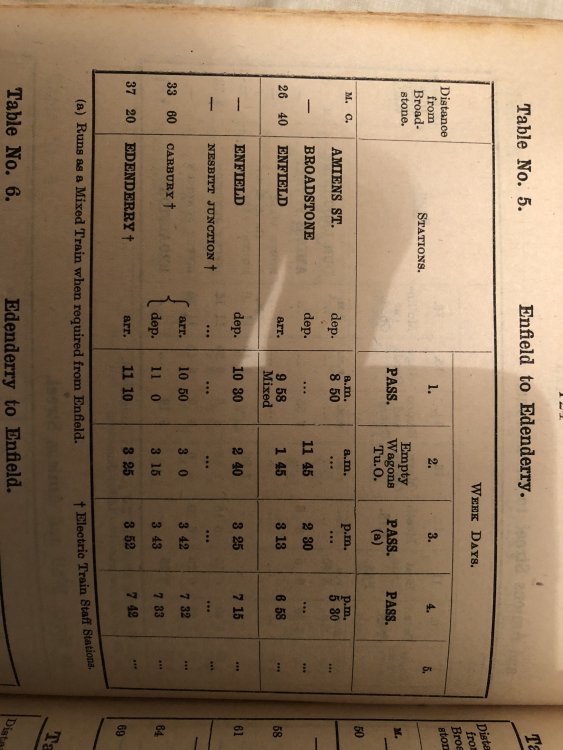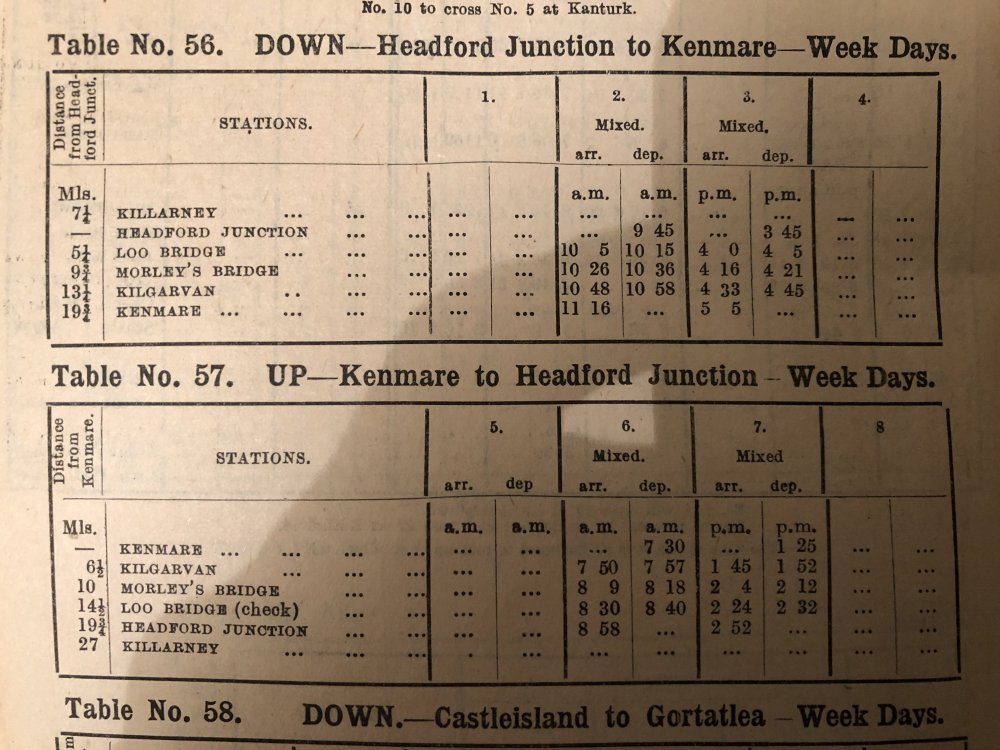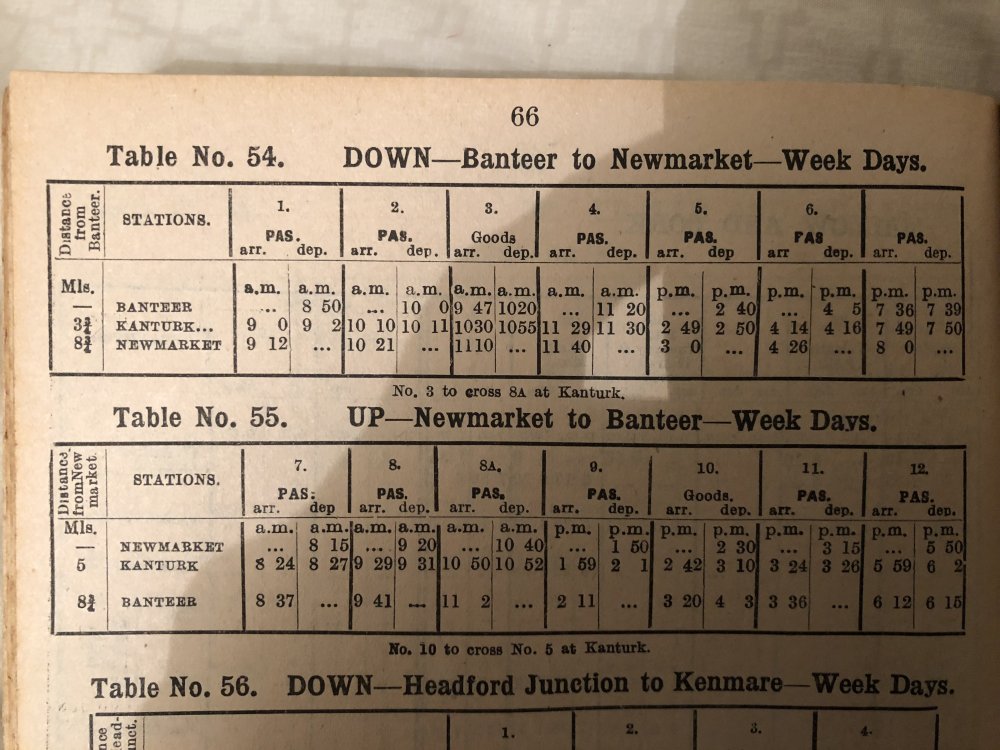-
Posts
15,859 -
Joined
-
Last visited
-
Days Won
393
Content Type
Profiles
Forums
Events
Gallery
Everything posted by jhb171achill
-
Availability of transfers for CIE green coaches
jhb171achill replied to jhb171achill's topic in Irish Models
Problem solved! Thanks! I've ordered roundels from SSM. Next, Railtec for the carriages! -
Folks Somewhere in the back of what little still passes for grey matter, I seem to recall that someone was proposing to make the correct light green (eau-de-nil) lining, "flying snails" and numerals (both "1" and "2" for doors, plus vehicle numbers). All manner of yellow, white, gold and other colours are available (many never carried on anything!) but is there anywhere that very pale green bits and pieces can be had? While I'm at it, I see that SSM now have the roundel used on palvans and H vans from the late sixties until the "brown" era for wagons started in the early seventies, as well as the all-white ones used earlier. And - what about a font in the old gaelic script for the old bilingual enamel GSR station signs?
-
I happen to have a small tin of Revell 78 in front of me right now, which is close enough too. The weathering, of course, shows greys up darker; I have a SSM J15 which is (deliberately) heavily weathered. It looks almost black, though it has to be said that the initial grey used was too dark,
-
Roderick of 00 Works tells me that Precision Paints now sell correct loco grey, but be careful: what they call locomotive grey is, I believe, the (light) shade used on 071s these days. For steam loco standard grey, ask them for the more long-winded "GSWR / GSR / CIE Locomotive Grey".
-
I'm posting this message in several places where relevant; Roderick of 00 Works informs me that Precision Paints now have the correct loco grey. They ALREADY have "loco grey"; I assume this is the lighter shade used today on 071s. So the correct one to ask for is "GSWR / GSR / CIE Locomotive Grey", mouthful though that is.... This model has got to be one of the best scratchbuilds I've ever seen. Very well done!
-
When is that on?
-
The Midland Great Western’s Enfield - Edenderry branch was one of these sleepy rural backwaters (like Cashel, the T & D, or Mitchelstown) which only came alive for a weekly or monthly cattle fair; beyond that, the odd GAA special. However, despite its size and proximity to Dublin, it lost its regular full service as long ago as 1931. Here’s the 1930 WTT, the last full one, and the November 1931 equivalent, with just the daily goods and a weekly cattle path. Over thirty years would elapse until it closed entirely in 1963; weeds would see more activity than the rails within this period. A strange one here. In the same period in 1930, look how busy the Newmarket branch is, compared to Kenmare; yet the former closed first!
-
All of them entered traffic without it. They started adding them after first repaint in mid to late 1960s. The 181s entered traffic WITH the roundel. Therefore any 141 that ever went along the Derry Road did not have a roundel, and as stated elsewhere, no 181 ever went there as they delivered after the line closed.
-
Also, they would only have been on the pilgrimage trains, never goods (or scheduled passenger trains).
-
Hmmmmmm Scrap Line / RPSI next!
-
If the IWTs go to 24 wagons, and all are 201-hauled, what will the 071s do?
-
Superb, so realistic, ttc. You must have almost as many locos as IE, now!
-
For a DNGR layout, those six wheelers are absolutely essential, as they made up the consist of virtually every single train. The boat train was short lived, and the more usual use of one of their few bogies was to strengthen a train of 2 or 3 six wheelers. With locos readily adaptable, and beautiful coastal scenery, the DNGR would make an amazing model. GNR goods stock from the Dept. of Provincial Wagons, plus certain classes of GNR tank loco (the SSM one, maybe) would complete the picture.
-
Should be, provided it's on the level. Years ago, I used to take the weights out of ordinary Hornby wagons. If the track is well laid, this won't make them wobble unrealistically. My track was absolutely perfect, as it was laid by a former PW Civil Engineer from the GNR; i.e. jhb171Senior......
-
Correct restoration of Railwayana (Lineside Signs)
jhb171achill replied to DiveController's question in Questions & Answers
Correct, Minister. Many laws relating to not just railways, but EVERYTHING in Ireland, have their origin in English law before 1921. -
Meeeee! Please!
-
Correct restoration of Railwayana (Lineside Signs)
jhb171achill replied to DiveController's question in Questions & Answers
Superb job indeed. It's not Irish, though, or from 1845; it looks to be a standard font used by the Great Western Railway in England. I've seen many descriptions of tickets for sale on ebay, or railway signs etc in auctions, which are erroneous, either due to lack of knowledge on the part of the seller, or a fraudulent desire to make it appear more "historic" or "quaint". Also, disgracefully, modern replicas passed off as original. The above looks very much original, by the way! -
071 fleet overhaul updates.
jhb171achill replied to Railer's topic in What's happening on the network?
I still occasionally meet people who insist that all CIE steam engines were black*; others who see black and say it's grey, and others who see grey and thinks it's black. As can be seen above, there's probably no colour that seems to vary as much when it's photographed in different light! This means that photographs are very misleading in some cases, and in others anyone who personally remembers the colour concerned will be able to see that whatever is in a particular photo IS right, based on memory. And some people have better memories for colour than other! I'll add my tuppence-worth to the idea that I would love to see an 071 in black'n'tan, or even lined flying-snail-adorned CIE green! (Why not? A lot of people about would remember it from buses at least!).......... (*Many were after the mid 1950s, but the majority weren't!) -
It closed in 1960, rather than 1966, so as suggested elsewhere, no GMs, baby or otherwise, ever ran on it. C class diesels and steam engines only.
-
SUPERB!!!!!!!
-
Belmond - Haul only or push pull?
jhb171achill replied to Noel's topic in What's happening on the network?
That came from yours truly!!! -
Entirely up to you, Anthony! Anything I’ve ever done has a fictitious name but which seems to sound right. My current effort is named after a small rural village of which I have fond childhood memories, but no railway ever went near it in reality!
-
Belmond - Haul only or push pull?
jhb171achill replied to Noel's topic in What's happening on the network?
That’s actually true...... the main draw for the Emerald people is indeed the accommodation. (I’ve been on them all). -
Very much so!
-
Always available on the DCDR!
.png.c363cdf5c3fb7955cd92a55eb6dbbae0.png)








